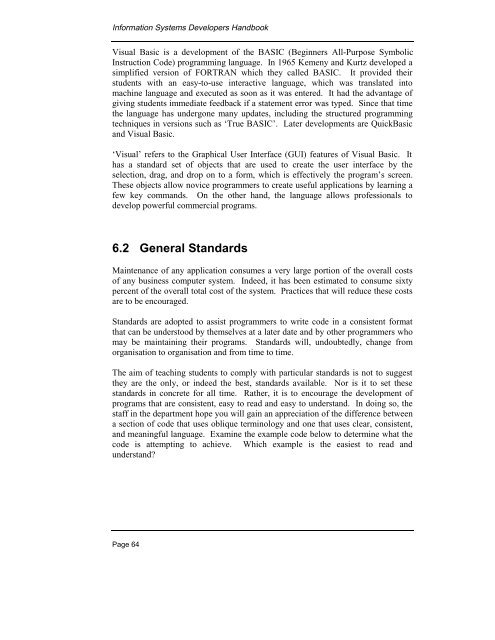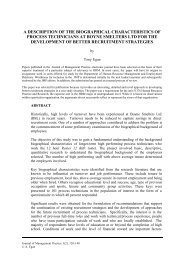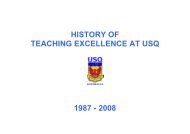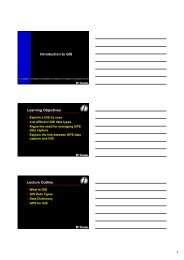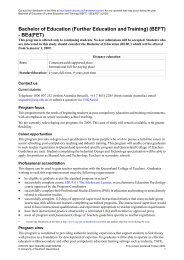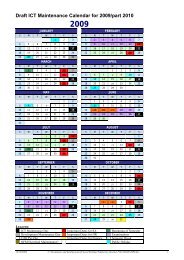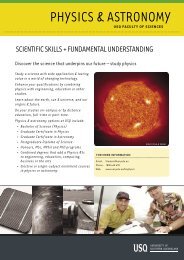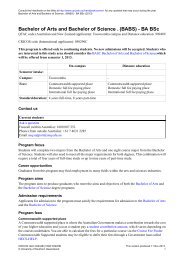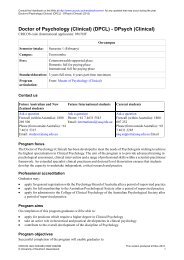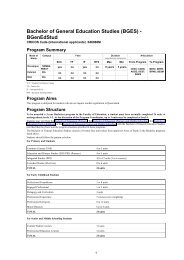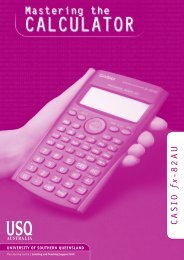Chapter 6 VB/Access Programming
Chapter 6 VB/Access Programming
Chapter 6 VB/Access Programming
You also want an ePaper? Increase the reach of your titles
YUMPU automatically turns print PDFs into web optimized ePapers that Google loves.
Information Systems Developers HandbookVisual Basic is a development of the BASIC (Beginners All-Purpose SymbolicInstruction Code) programming language. In 1965 Kemeny and Kurtz developed asimplified version of FORTRAN which they called BASIC. It provided theirstudents with an easy-to-use interactive language, which was translated intomachine language and executed as soon as it was entered. It had the advantage ofgiving students immediate feedback if a statement error was typed. Since that timethe language has undergone many updates, including the structured programmingtechniques in versions such as ‘True BASIC’. Later developments are QuickBasicand Visual Basic.‘Visual’ refers to the Graphical User Interface (GUI) features of Visual Basic. Ithas a standard set of objects that are used to create the user interface by theselection, drag, and drop on to a form, which is effectively the program’s screen.These objects allow novice programmers to create useful applications by learning afew key commands. On the other hand, the language allows professionals todevelop powerful commercial programs.6.2 General StandardsMaintenance of any application consumes a very large portion of the overall costsof any business computer system. Indeed, it has been estimated to consume sixtypercent of the overall total cost of the system. Practices that will reduce these costsare to be encouraged.Standards are adopted to assist programmers to write code in a consistent formatthat can be understood by themselves at a later date and by other programmers whomay be maintaining their programs. Standards will, undoubtedly, change fromorganisation to organisation and from time to time.The aim of teaching students to comply with particular standards is not to suggestthey are the only, or indeed the best, standards available. Nor is it to set thesestandards in concrete for all time. Rather, it is to encourage the development ofprograms that are consistent, easy to read and easy to understand. In doing so, thestaff in the department hope you will gain an appreciation of the difference betweena section of code that uses oblique terminology and one that uses clear, consistent,and meaningful language. Examine the example code below to determine what thecode is attempting to achieve. Which example is the easiest to read andunderstand?Page 64


